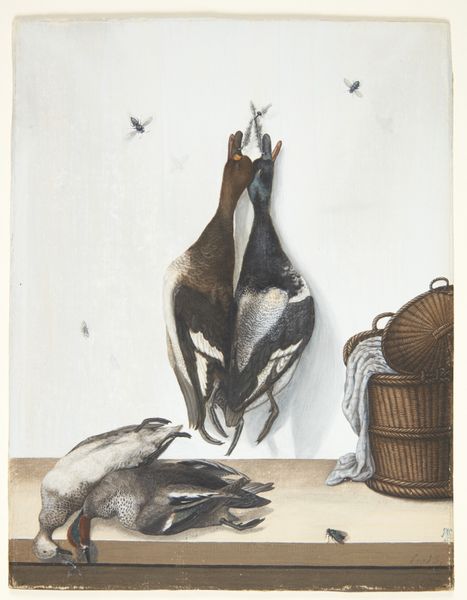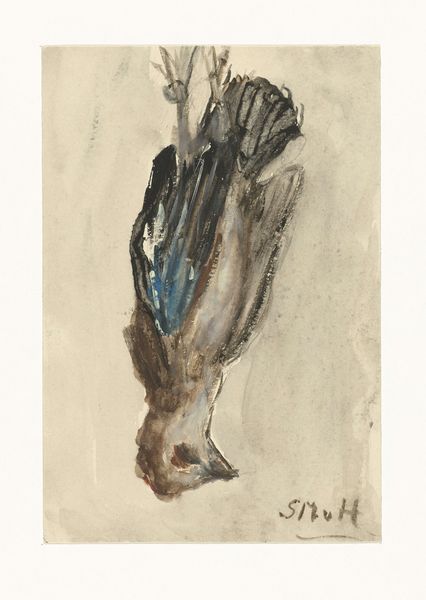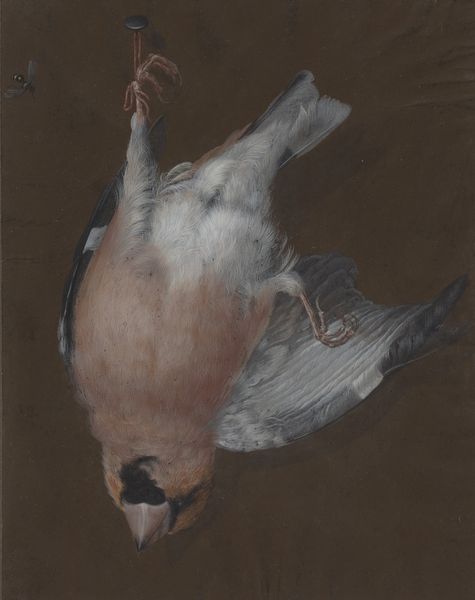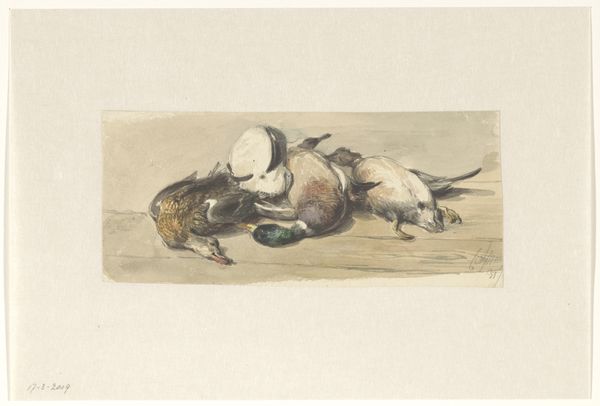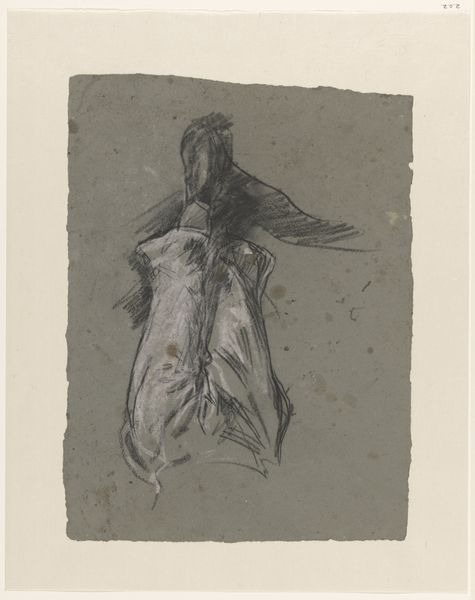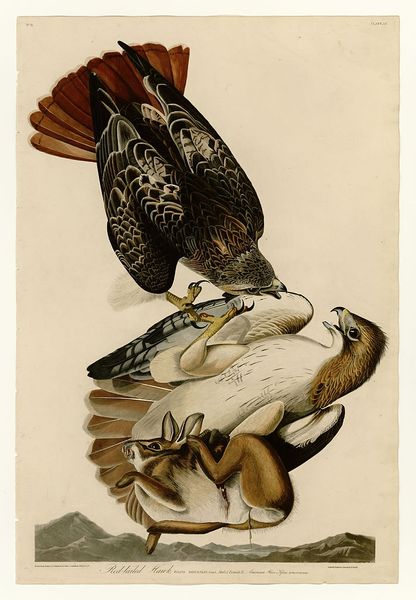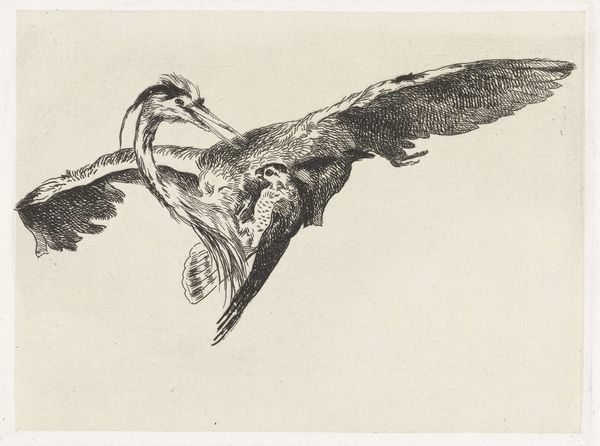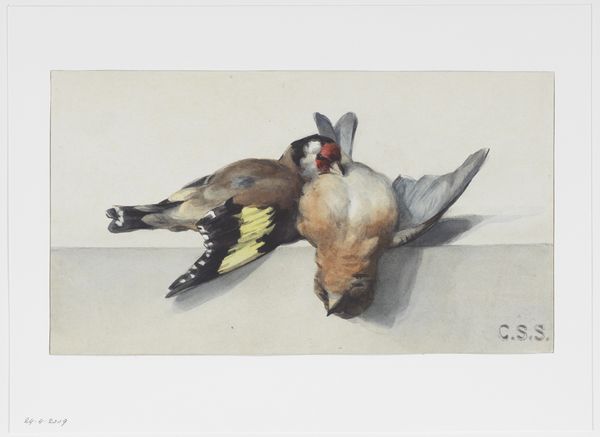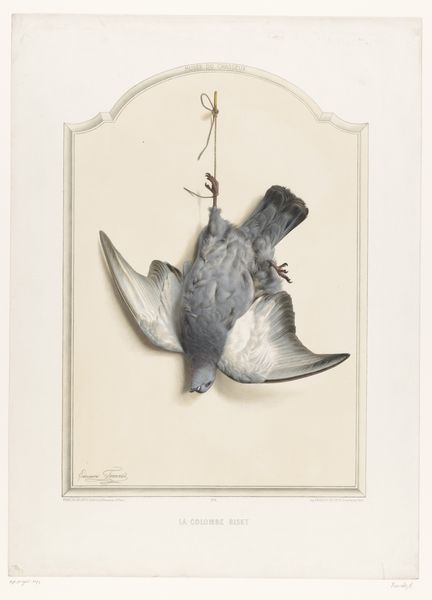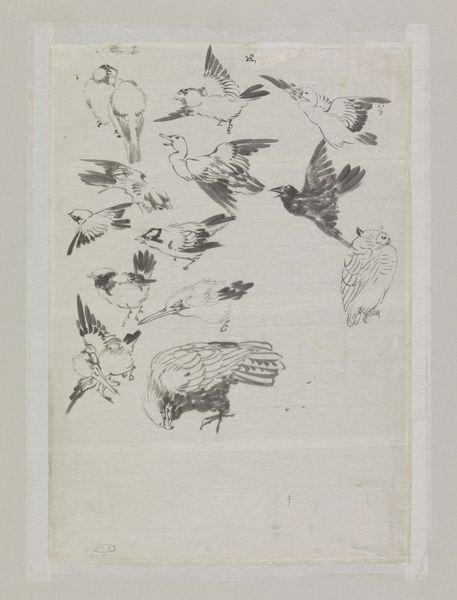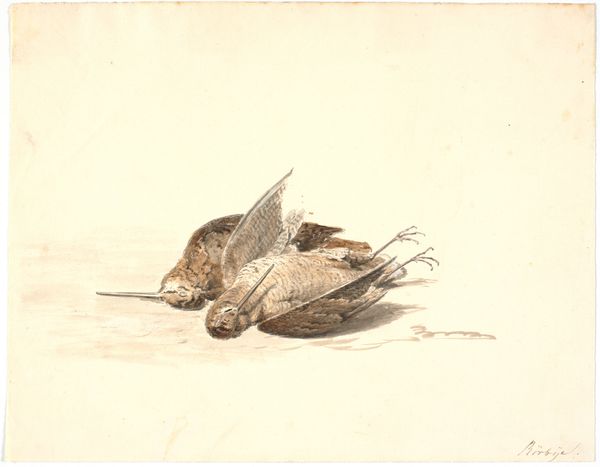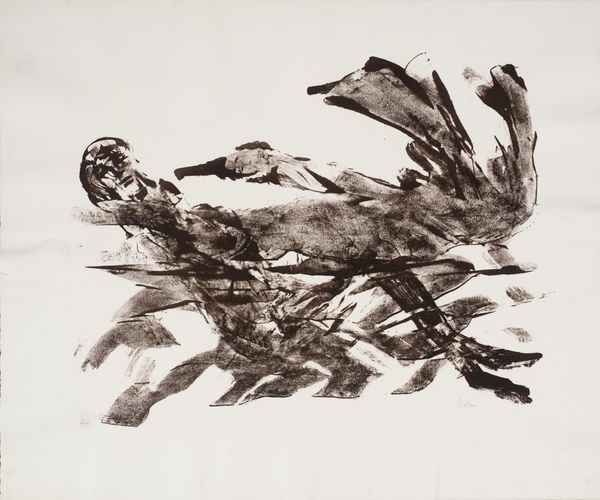
drawing, gouache, watercolor
#
drawing
#
baroque
#
gouache
#
figuration
#
watercolor
#
watercolour illustration
Dimensions: 227 mm (height) x 176 mm (width) (bladmaal)
Curator: This gouache, watercolor, and drawing by Anton Ignaz Hamilton, titled "Stilleben med fugle," likely created sometime between 1696 and 1770, presents quite a stark image. What’s your first impression? Editor: Ominous. There's something about the starkness – the hanging birds, the muted palette—that evokes a sense of stillness and death. Even the little flies seem frozen in place. It feels very deliberate. Curator: "Still life with birds"— the title seems to hint at that. While seemingly simple, still life paintings are anything but. Here we have dead game, but the image pulsates with a life cycle: birth, death and regeneration; or predation and decay, which is echoed by a tiny spider hanging on its web near the top left corner. These works were frequently commissioned to celebrate hunting prowess, power and dominion. Editor: That connection to power makes sense, given the historical context. How would these "trophies" have been displayed or used in the 17th and 18th centuries? Were these paintings commissioned for private estates or larger, more public spaces? Were they exclusively a Northern-European affectation? Curator: Generally, the still life celebrates the patron’s material wealth and superior social standing. These ‘prey’ were often culinary delicacies in a feast presented by members of the aristocracy to demonstrate their ‘breeding.’ Hamilton brings forward the older Dutch and Flemish masters who had been influential at the courts. Editor: So it is performative – it's all about signalling status. Do you think this work carries other symbolic weight beyond that of mere social stratification? The type of birds depicted—were they selected intentionally for reasons other than, say, taste? Curator: Indeed. Think of these animals as allegorical representations of the hunt itself; their symbolism stems from Medieval bestiaries onward. Perhaps this ‘still life’ is not a true capture from the ‘hunt,’ but the display functions on symbolic levels, even when presented as naturalistic imagery. Editor: Looking at the composition, there is an unsettling directness in its depiction. It's meticulously rendered and undeniably disturbing, a reminder of our place within the food chain and society. I have to admit, I will likely have nightmares. Curator: The artist would agree that its purpose is fulfilled in the observer then. It reflects the artist's acute eye for the natural world while commenting on social hierarchies of that world through time, a rather remarkable achievement in allegorical rendering.
Comments
No comments
Be the first to comment and join the conversation on the ultimate creative platform.
